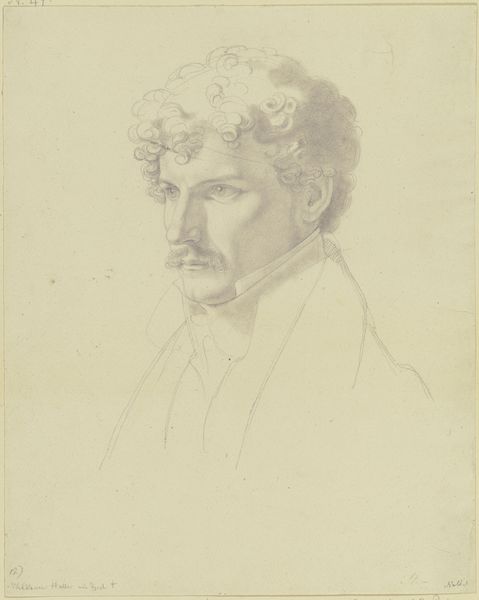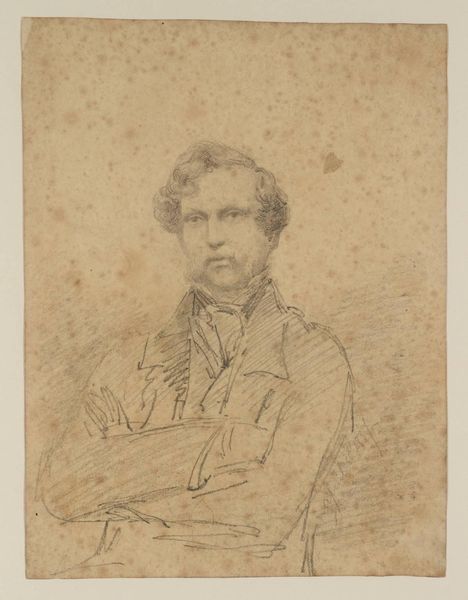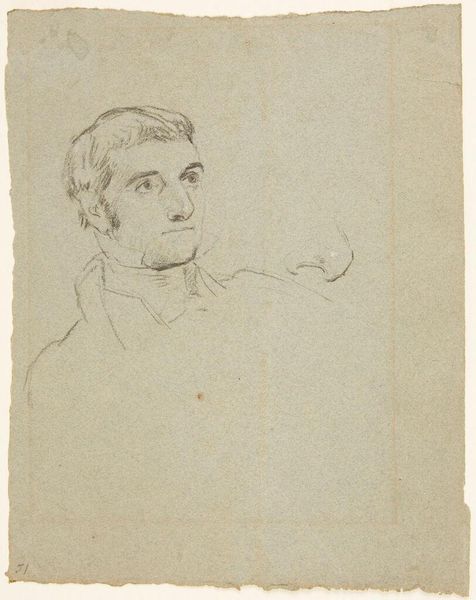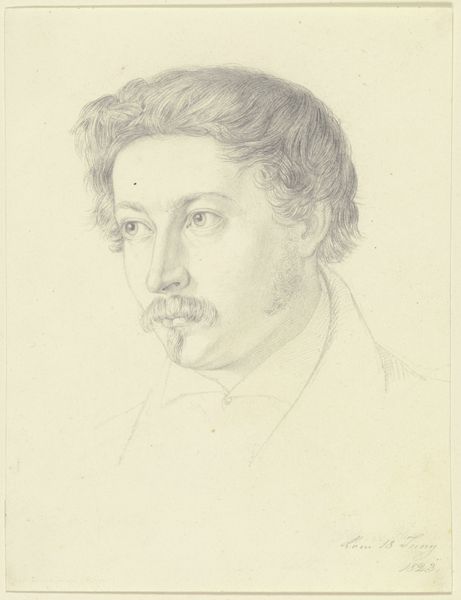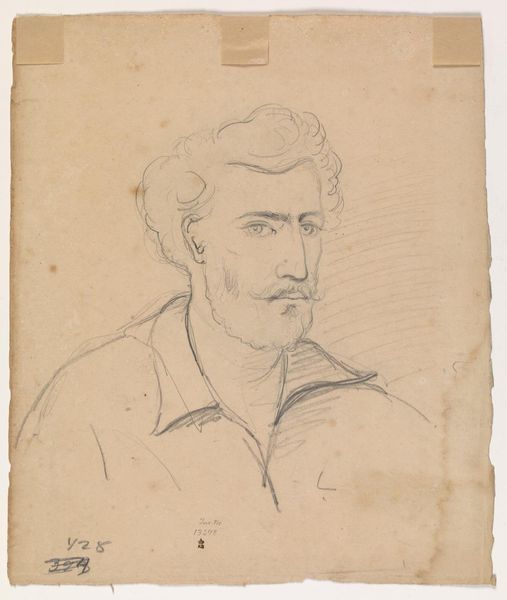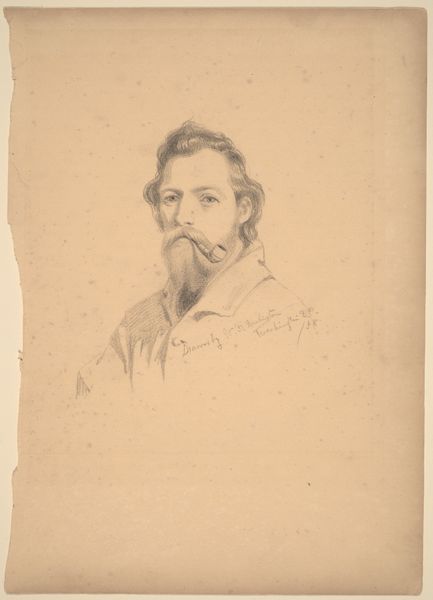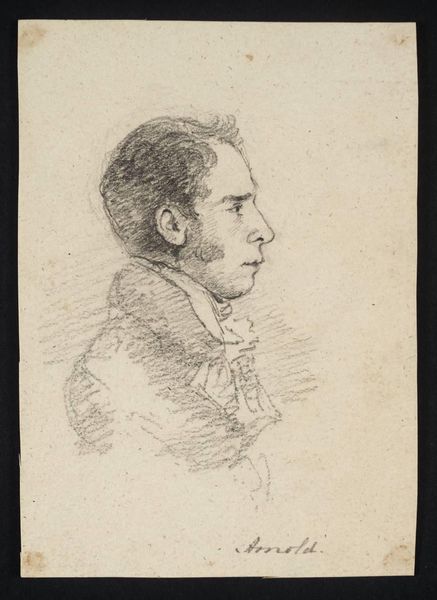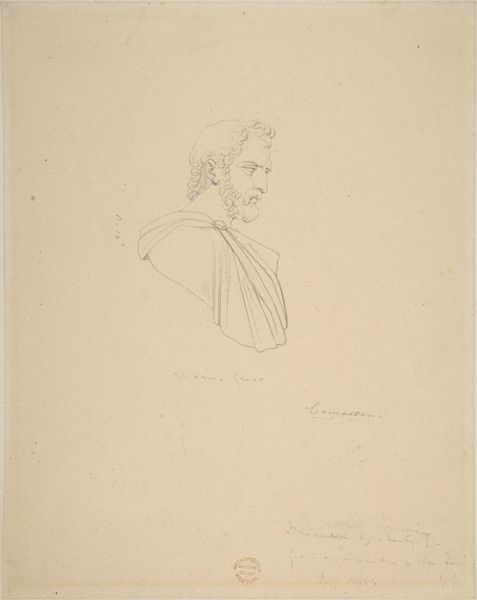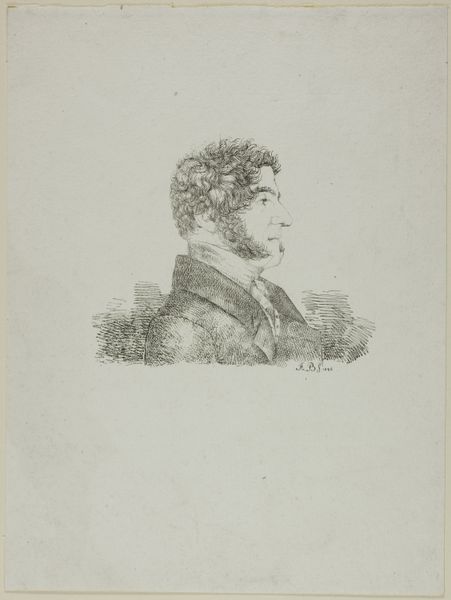
Self-Portrait, three-quarter profile to the left (Caracas (?) 1853/54) 1853 - 1854
0:00
0:00
drawing, pencil
#
portrait
#
drawing
#
self-portrait
#
pencil
#
portrait drawing
#
academic-art
Dimensions: 302 mm (height) x 258 mm (width) (bladmaal)
Curator: This pencil drawing, titled "Self-Portrait, three-quarter profile to the left," comes to us from Camille Pissarro, likely dating between 1853 and 1854. Editor: He looks intense! There's a romantic sort of yearning in the way he’s captured his own gaze. And the soft shading gives it a vulnerable quality. Curator: It’s a striking contrast. He's only in his twenties here, residing in Caracas. These were formative years, prior to his deep engagement with Impressionism in France. Editor: So interesting to see this academic style, knowing how radically his work would later evolve. What do we read in the iconography of a self-portrait, especially at this stage in an artist’s career? Is it a declaration of self, an assertion of artistic identity? Curator: Potentially both. The act of portraying oneself holds immense significance. For Pissarro, sketching himself allows him to reflect on his place in the world, perhaps charting his ambitions. This careful, academic style places him within an established artistic tradition. Editor: That strong, direct gaze speaks volumes. He's deliberately presenting himself as an artist of substance, rooted in something real. What gets me is how clearly we can trace the history of his artistic lineage right on his face. Curator: Absolutely, his identity is being self-consciously constructed, aligning him with his influences even while subtly suggesting the seeds of future divergence. We understand the man better and feel connected with this kind of intimate approach. Editor: Looking at it now, the intensity remains, but a little tempered, perhaps accepting. An artist coming into his own in preparation of his own revolution to come! Curator: Indeed. And by examining works like this one, we start to build up a comprehensive vision about what art represented and means. Editor: I appreciate seeing that kind of evolution; thank you for sharing that context and insight. Curator: The pleasure was all mine.
Comments
No comments
Be the first to comment and join the conversation on the ultimate creative platform.
